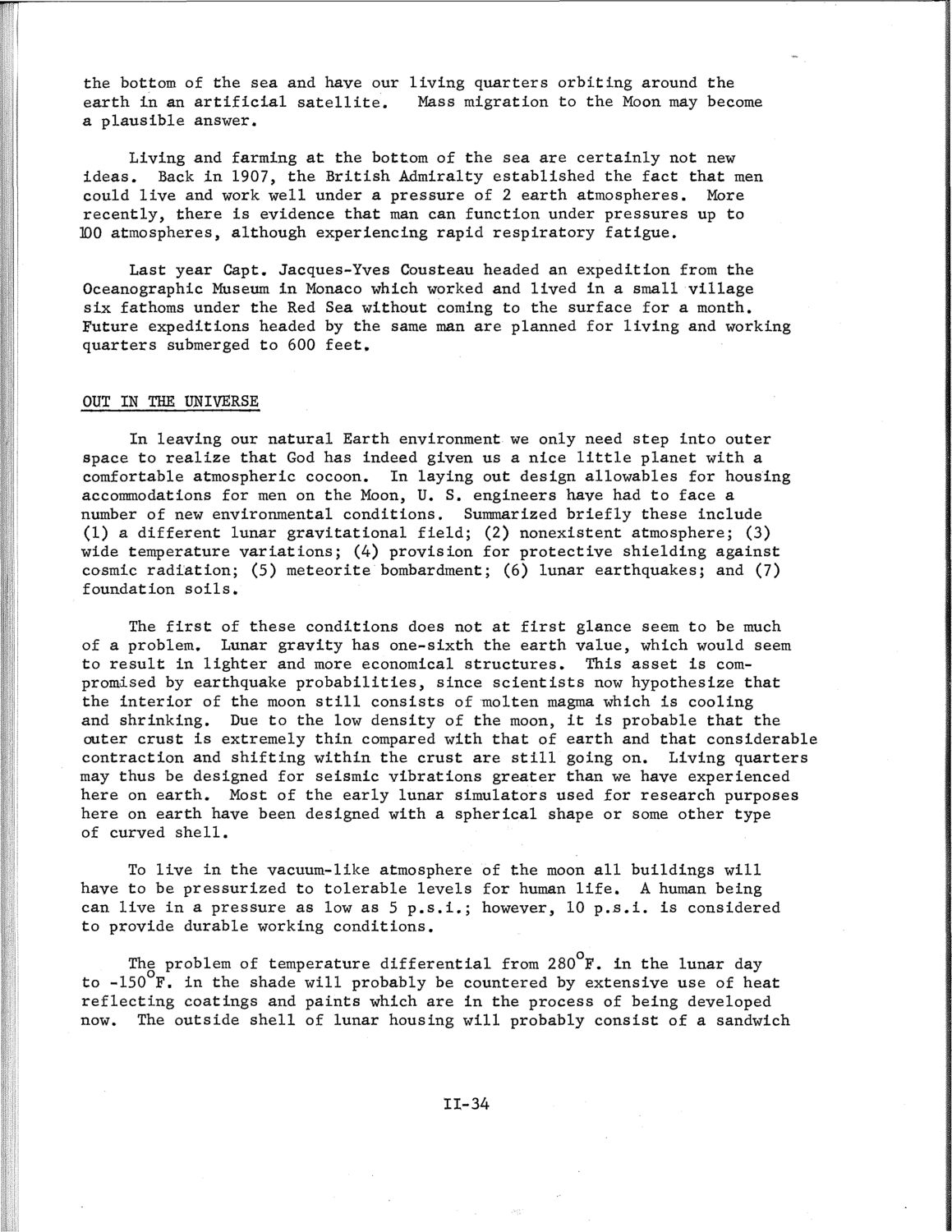| |
| |
Caption: SWE - Proceedings of the First International Conference of Women Engineers and Scientists
This is a reduced-resolution page image for fast online browsing.

EXTRACTED TEXT FROM PAGE:
the bottom of the sea and have our living quarters orbiting around the earth in an artificial satellite. Mass migration to the Moon may become a plausible answer. Living and farming at the bottom of the sea are certainly not new ideas. Back in 1907, the British Admiralty established the fact that men could live and work well under a pressure of 2 earth atmospheres. More recently, there is evidence that man can function under pressures up to DO atmospheres, although experiencing rapid respiratory fatigue. Last year Capt. Jacques-Yves Cousteau headed an expedition from the Oceanographic Museum in Monaco which worked and lived in a small village six fathoms under the Red Sea without coming to the surface for a month. Future expeditions headed by the same man are planned for living and working quarters submerged to 600 feet. OUT IN THE UNIVERSE In leaving our natural Earth environment we only need step into outer space to realize that God has indeed given us a nice little planet with a comfortable atmospheric cocoon. In laying out design allowables for housing accommodations for men on the Moon, U. S. engineers have had to face a number of new environmental conditions. Summarized briefly these include (1) a different lunar gravitational field; (2) nonexistent atmosphere; (3) wide temperature variations; (4) provision for protective shielding against cosmic radiation; (5) meteorite bombardment; (6) lunar earthquakes; and (7) foundation soils. The first of these conditions does not at first glance seem to be much of a problem. Lunar gravity has one-sixth the earth value, which would seem to result in lighter and more economical structures. This asset is compromised by earthquake probabilities, since scientists now hypothesize that the interior of the moon still consists of molten magma which is cooling and shrinking. Due to the low density of the moon, it is probable that the outer crust is extremely thin compared with that of earth and that considerable contraction and shifting within the crust are still going on. Living quarters may thus be designed for seismic vibrations greater than we have experienced here on earth. Most of the early lunar simulators used for research purposes here on earth have been designed with a spherical shape or some other type of curved shell. To live in the vacuum-like atmosphere of the moon all buildings will have to be pressurized to tolerable levels for human life. A human being can live in a pressure as low as 5 p.s.i.; however, 10 p.s.i. is considered to provide durable working conditions. The problem of temperature differential from 280 F. in the lunar day to -150 F. in the shade will probably be countered by extensive use of heat reflecting coatings and paints which are in the process of being developed now. The outside shell of lunar housing will probably consist of a sandwich 11-34
| |